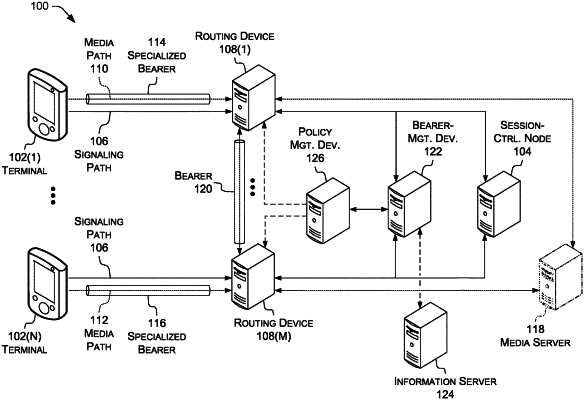| CPC H04L 41/0893 (2013.01) [H04L 63/0227 (2013.01); H04L 65/1016 (2013.01); H04L 65/1104 (2022.05); H04L 65/80 (2013.01); H04M 15/66 (2013.01)] | 20 Claims |

|
1. A network terminal, comprising:
a wireless communications interface;
at least one processor; and
at least one computer-readable medium storing instructions executable by the at least one processor to cause the at least one processor to perform operations comprising:
receiving a network address via the wireless communications interface;
determining a network port associated with the network address;
sending a Session Initiation Protocol (SIP) INVITE message to a network control device, wherein:
the SIP INVITE message indicates the network port;
the SIP INVITE message indicates a media type;
the media type is not an audio media type;
the media type is not a video media type;
the SIP INVITE message comprises a request Uniform Resource Identifier (URI) indicating a first network entity; and
the SIP INVITE message comprises a To-header value indicating a second network entity;
receiving a SIP success message in response to the SIP invite message; and
subsequently, exchanging data on the network port with a peer network terminal via the wireless communications interface, wherein the peer network terminal is different from the first network entity and the second network entity.
|